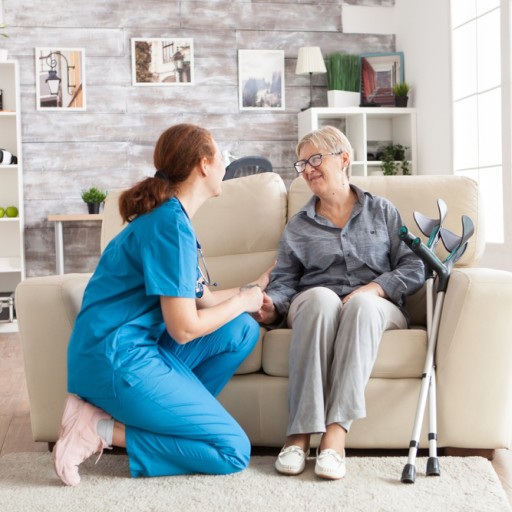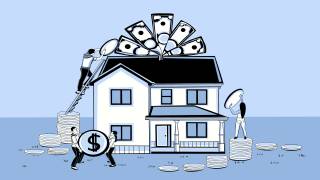New Trends in Healthcare for the Elderly
As the global aging problem becomes more and more serious, how to let the elderly spend a healthy and happy old age has become the focus of attention of all countries.
As a country with a high level of medical care in the world, the U.S. continues to innovate in the field of medical care and healthcare for the elderly, and a series of new trends have emerged.
Wide application of telemedicine
With the rapid development of science and technology, telemedicine has been widely used in the field of elderly healthcare in the United States. Telemedicine breaks the limitations of time and space, providing more convenient medical services for the elderly.
Through video calls, remote monitoring and other technological means, seniors can have face-to-face communication with their doctors at home to obtain diagnosis and treatment recommendations.
Telemedicine is especially important for seniors with chronic diseases. For example, diabetic patients can transmit their blood glucose data in real time to their doctors through remote monitoring devices, and the doctors can make timely adjustments to their treatment programs based on the data.
In addition, smartwatches and health monitoring devices can track seniors' health data in real time, such as heart rate, blood sugar and sleep quality. These data can not only help the elderly manage their health, but also provide important reference information for doctors.
The widespread use of telemedicine not only improves the accessibility of medical services, but also reduces the cost and burden of medical treatment for the elderly. Elderly people do not need to travel long distances to hospitals, saving time and energy.
At the same time, telemedicine also reduces the flow of people in hospitals, lowering the risk of cross-infection.

The Rise of Personalized Medicine
Personalized medicine is the provision of customized healthcare services to patients based on factors such as an individual's genes, environment and lifestyle. Personalized medicine is becoming a new trend in the field of healthcare for the elderly.
With the continuous advancement of genetic testing technology, doctors can develop more precise treatment plans based on the genetic information of the elderly.
For example, for certain cancer patients, genetic testing can determine the type of genetic mutation in their tumors, so that the most effective targeted drugs can be selected for treatment.
With the development of Internet technology, medical and health services for the elderly in the United States have gradually become online. Elderly people can manage their health anytime and anywhere through smartphones, tablet PCs and other devices.
For example, telemedicine, online counseling, chronic disease management and other services allow the elderly to enjoy convenient medical services.
In the United States, smart devices have become a good helper for the elderly to age at home.
Smart mattresses, smart bracelets, smart blood pressure monitors and other devices can monitor the physiological data of the elderly in real time and provide personalized health management solutions for the elderly through cloud-based data analysis.
In addition, smart robots, smart wheelchairs and other devices can also help the elderly with daily life care.
The rapid development of the biotechnology industry in the United States has brought about many breakthroughs in healthcare for the elderly. Advanced technologies such as genetic testing, cell therapy, and regenerative medicine have provided new ways to treat age-related diseases.

For example, genetic testing helps to identify the risk of age-related diseases in advance, and cell therapy provides new treatment means for age-related cardiovascular diseases and neurodegenerative diseases.
In addition, personalized medicine focuses on the overall health condition and lifestyle of the elderly. Doctors will take into account the physical condition, dietary habits, exercise habits and other factors of the elderly to formulate a personalized health management plan for them.
For example, for seniors suffering from cardiovascular disease, doctors will develop a personalized diet and exercise regimen to reduce the risk of the disease.
The rise of personalized medicine has provided seniors with more precise and effective medical services, improving treatment outcomes and quality of life.
However, personalized medicine also faces a number of challenges, such as the high cost of genetic testing and data privacy protection, which need to be further addressed. Traditional healthcare models tend to focus on the treatment of diseases and neglect the overall health needs of older adults.
In order to better meet the healthcare needs of older adults, the United States has promoted an integrated care model in recent years.
The integrated care model organically combines medical, rehabilitation, nursing and psychological support services to provide comprehensive health services for older persons.
Under this model, multidisciplinary professionals such as doctors, nurses, rehabilitators, dietitians, psychological counselors and other professionals form a team to work together to formulate a personalized care plan for the elderly and work collaboratively to ensure the smooth implementation of the plan.

For example, for an elderly person suffering from post-stroke hemiplegia, the integrated care team will provide comprehensive care services including rehabilitation training, physiotherapy, medication, nutritional support and psychological counseling.
Rehabilitation trainers will formulate a rehabilitation training plan according to the physical condition of the elderly to help them restore their body functions; nurses will conduct regular nursing assessments for the elderly to ensure that their physical condition is stable.
Dietitians will formulate a reasonable diet plan for the elderly to provide nutritional support; and psychologists will pay attention to the psychological state of the elderly, and provide them with psychological counseling in a timely manner, so as to help them build up their confidence in recovery.
The promotion of the integrated care model has improved the quality of medical services and the quality of life of the elderly, reduced the occurrence of complications, and prolonged the life of the elderly. At the same time, this model also promotes the rational allocation of medical resources and improves medical efficiency.
Challenges and Responses
Although the United States has made some new progress in the field of healthcare for the elderly, it still faces some challenges. First, the rising cost of healthcare has placed a heavy burden on the elderly and the government.
To address this problem, the U.S. government needs to further reform the Medicare system to control the growth of healthcare costs, while encouraging healthcare organizations to improve healthcare efficiency and reduce costs.
Second, differences in the digital literacy of the elderly may affect the popularization and application of some new technologies.
In order for more older people to benefit from the convenience of technology, there is a need to strengthen digital skills training for older people and improve their acceptance and ability to use technologies such as smart health devices and telemedicine.
In addition, the uneven distribution of healthcare resources is also a problem. Elderly people in some remote areas and impoverished communities may have difficulty in accessing high-quality medical services.

The government and social organizations should increase medical investment in these areas, improve medical facilities, and train and attract more medical professionals, so as to ensure that the elderly have fair access to medical resources.
In the future, as technology continues to advance, more innovations will come to the field of healthcare for the elderly. Artificial intelligence and big data analysis will play a greater role in disease prevention, early diagnosis and personalized treatment.
The government will play a more important role in promoting healthcare for the elderly, including increasing funding, improving healthcare policies and encouraging research and innovation.
Increased public attention and awareness of medical healthcare for the elderly will help all sectors of society work together to create a more friendly living and medical environment for the elderly.
In the future, with the further development of technology and the advancement of society, new trends and innovations will continue to emerge in the field of healthcare for the elderly in the United States. We look forward to these new changes bringing more benefits to the elderly and making their later years better.
At the same time, we also hope that other countries will learn from the experience and practices of the United States and, taking into account their own national conditions.
Explore a path of medical and health care development that is suitable for the elderly in their own countries, so that they can jointly meet the challenges posed by the global ageing of the population.
OTHER NEWS
-
- Unmasking Real Estate Fraud: Types and Solutions!
- By Wendy 31 Jul,2023

-
- Do you have all 5 types of insurance you need to live in the USA?
- By Anna 24 Apr,2023

-
- The Power of 0% APR Credit Cards: Pros and Cons!
- By Wendy 02 Oct,2023

-
- Buy a Second Home, you Need to Know This!
- By Little Grapes 24 Apr,2023

-
- How to Choose the Right Savings Account for Your Needs
- By Prodosh Kundu 07 Aug,2024

-
- Insuring Modified Cars: Protecting Your Unique Ride!
- By Wendy 17 Jul,2023

-
- Unraveling the Tax Mysteries of Credit Card Rewards!
- By Wendy 15 Jan,2024

-
- About Real Estate, These you Need to Know!
- By Little Grapes 24 Apr,2023

-
- Navigating the Financial Landscape: A Comprehensive Guide to Financial Wellness
- By Little Grapes 25 Dec,2023

-
- How do I buy the House I Want?
- By Anna 24 Apr,2023

-
- Some Tips on Buying a Condo!
- By Wendy 24 Apr,2023

-
- Weighing the Pros and Cons: Using a Personal Loan to Tackle Credit Card Debt.
- By Wendy 09 Jun,2023

 1
1 1
1